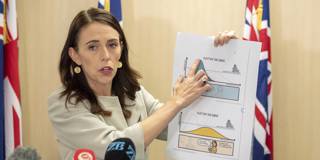With decision-makers relying on a growing torrent of forecasts regarding COVID-19 and other important issues, it is more important than ever that they ask questions about how the projections were made. To use predictive tools more effectively, policymakers should ask four questions in particular.
CAMBRIDGE – On April 8, New York Governor Andrew Cuomo announced that his state was “flattening the curve” of the COVID-19 pandemic. But only two weeks earlier, various models had projected that peak hospitalizations in New York could be several times higher than they in fact turned out to be. Juxtaposing the actual number of COVID-19 hospitalizations with those projections, Cuomo wondered, “How do you come up with an actual curve that is so much different than what those experts predicted?”

CAMBRIDGE – On April 8, New York Governor Andrew Cuomo announced that his state was “flattening the curve” of the COVID-19 pandemic. But only two weeks earlier, various models had projected that peak hospitalizations in New York could be several times higher than they in fact turned out to be. Juxtaposing the actual number of COVID-19 hospitalizations with those projections, Cuomo wondered, “How do you come up with an actual curve that is so much different than what those experts predicted?”